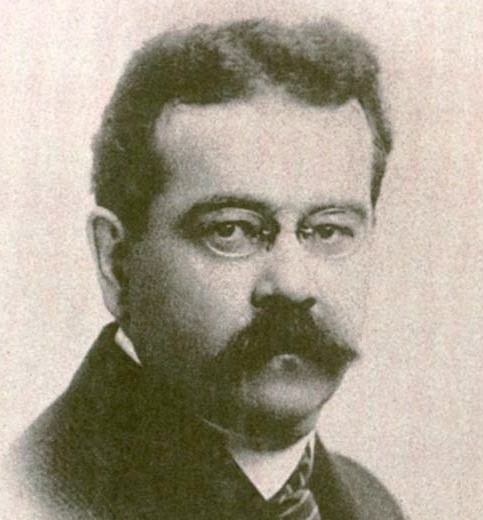- cross-posted to:
- joeroganexperience@lemmy.world
- cross-posted to:
- joeroganexperience@lemmy.world
cross-posted from: https://radiation.party/post/104584
[ comments | sourced from HackerNews ]
Paul Landis was one of two Secret Service agents tasked with guarding first lady Jacqueline Kennedy on November 22, 1963—the day President John F. Kennedy was assassinated. In a new book, The Final Witness, to be published in October, Landis claims to have seen something that afternoon that he had never publicly admitted before. His secret, coming to light only now, will certainly reorient how historians and laymen perceive that grave and harrowing event. His account also raises questions about whether there might have been a second gunman in Dallas that day.
…
Landis was approximately 15 feet away when Kennedy was mortally wounded, a close witness to unspeakable horror.
That horror was compounded when the president’s limo reached Parkland Memorial Hospital, where Landis and Clint Hill tried to coax Jackie to release the president, whom, by that point, she had cradled in her lap. Climbing into the back seat area, which had been spattered with blood and brains and bullet fragments, both agents, according to their subsequent accounts, gently encouraged the first lady to let go.
As she did—standing up to follow Hill and another agent, Roy Kellerman, who lifted her husband’s body onto a gurney and raced into the hospital—Landis saw and did something that he has kept secret for six decades, he says now. He claims he spotted a bullet resting on the top of the back of the seat. He says he picked it up, put it in his pocket, and brought it into the hospital. Then, upon entering Trauma Room No. 1 (at that stage, he was the only nonmedical person in the room besides Mrs. Kennedy, and both stayed for only a short period), he insists, he placed the bullet on a white cotton blanket on the president’s stretcher.
This secret, as it turns out, may upend key conclusions of the Warren Commission, the body created by President Lyndon Johnson to investigate the assassination.
The sad fact is that Landis—though required to provide his version of events to the Secret Service (and, in a second report, to what would become the Warren Commission)—never sat for an interview before the FBI and never testified before the commission itself. He left the Secret Service months after the assassination and before the panel had finished its work and issued its report.
…
At Parkland Memorial Hospital, on the day of the assassination, an additional intact bullet was discovered on a stretcher. Through testing, commission investigators determined that the copper-jacketed, 6.5-millimeter bullet matched the rifling of the Mannlicher-Carcano that had been abandoned on the sixth floor of the depository. Testing on the bullet fragments resulted in a similar finding.
One key point to raise here concerns a fundamental underpinning of the Warren Commission report: the supposition that the retrieved intact bullet had been discovered on Governor Connally’s stretcher, not on Kennedy’s. It was from this assumption, in part, that the commission reached its pivotal conclusion: The available evidence indicated that “the bullet found on the Governor’s stretcher”—the single bullet—“could have caused all his wounds.” Over time, critics have referred to it as the “pristine” or “magic” bullet.
In his book, Paul Landis now says that when Jackie Kennedy stood up to enter Parkland, he looked over and saw that a bullet was improbably sitting on top of the rear seat of the limo, right around the spot where the limo’s detachable roof, which had been removed that day, would have otherwise been affixed to the trunk. Also, amid the blood and gore, Landis remembers, were two bullet fragments on the back seat, next to where Jackie had been sitting.
Landis contends that he reached over, picked up the lone bullet nestled in the crevice, and decided to place it in his pocket, mindful that if it were left there, precariously, it might be overlooked, pilfered by an unauthorized passerby, or misplaced once the president’s body was removed. Accompanying the first lady into Parkland, he says, he brought the bullet with him and, without conferring with Mrs. Kennedy, his fellow agents, or hospital staffers, placed it on JFK’s stretcher, thinking it needed to be with the body for the autopsy. As such, he contradicts a key linchpin underlying the findings of the Warren Commission. The bullet—as Landis tells it—was not from Connally’s stretcher.
From Landis’s description, three lines of inquiry emerge.
First, how did a largely intact bullet wind up on the ledge of the back seat, where JFK had been riding when he was shot?
Second, if Landis’s account is accurate, could Lee Harvey Oswald—who shot the president from a vantage point behind the motorcade—have acted alone, as the Warren Commission theorized?
And finally, why did Landis decide to keep this information to himself for six decades?
…
What does all this mean when considering whether Lee Harvey Oswald, as proposed by the Warren Commission, was the lone assassin? It certainly raises the stakes that another shooter might have been involved.
First, if the “pristine” bullet did not travel through both Kennedy and Connally, somehow ending up on Connally’s stretcher, then it stands to reason that Connally might have actually been hit by a separate bullet, coming from above and to the rear. The FBI recreation suggests that Oswald would not have had enough time to get off two separate shots so quickly as to hit Connally after wounding the president in the back. A second shooter must be considered.
And what about the bullet wound in the front of Kennedy’s neck? In one of the earliest critiques of the Warren Commission report, Josiah Thompson, author of Six Seconds in Dallas, proposed, not unreasonably, that the front-neck wound might have come from a bullet or bone fragment that was driven down and exited through the president’s throat from the final blast to his skull.


